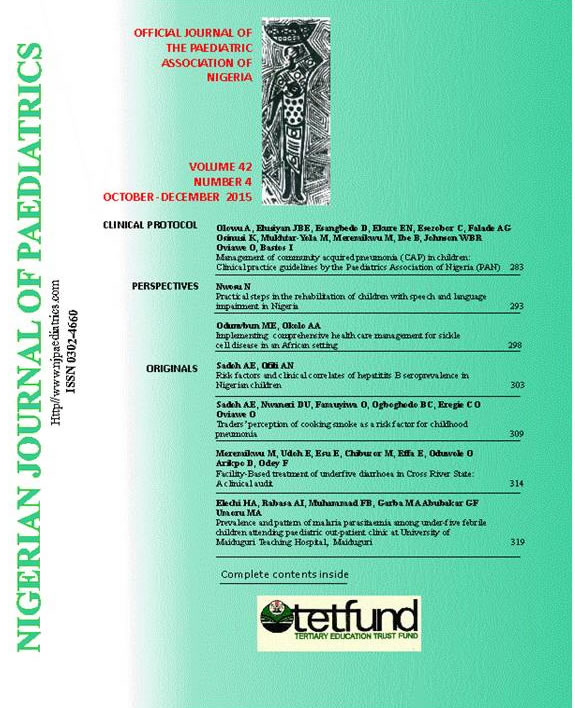Implementing comprehensive healthcare management for sickle cell disease in an African setting
Abstract
Abstract: Sickle cell disease is the commonest single gene disease in Africa. Morbidity and mortality from this disease has
remained unacceptably high inAfrica whereas there has been a marked reduction in the burden of this disease in the developed
countries. This reduction was not achieved through the use of sophisticated care such as bone marrow transplant, but through the adoption of a Comprehensive Health Care Management protocol for sickle cell disease. This protocol of care emphasizes prevention of crises through effectivemanagement of the disease. In Africa, where sickle cell disease is prevalent, this strategy of care isyet to be globally adopted. In 2003, this protocol of care was adopted at the University of Benin Teaching Hospital, Nigeria and this has contributed to the improved clinical status of children with sickle cell disease in the hospital. The mortality rate among children with sickle cell disease has reduced to 1.3%, requirement for recurrent blood transfusion has reduced to about 2%, and their nutritional status has improved: 75.9% have normal nutritional status while 7% are actually overweight. The frequency of bone pain crisis has reduced to about one in every two years and some of the patients have been crisisfree for as long as five years. Hydroxyurea is not routinely used for our patients so this cannot explain the marked improvement recorded.
conclusion, comprehensive health care, adapted to our setting is a very cheap and effective wayof managing sickle cell disease. It
can be utilized in all health facilities for the care of children with sickle cell disease and is capable of reducing the morbidity and mortality associated with the disease as well as improving their quality of life.
Downloads
Published
Issue
Section
License
This is an open-access journal, and articles are distributed under the terms of the Creative Commons Attribution 4.0 License, which allows others to remix, transform, and build upon the work even, commercially, as long as appropriate credit is given to the author, and the new creations are licensed under identical terms

